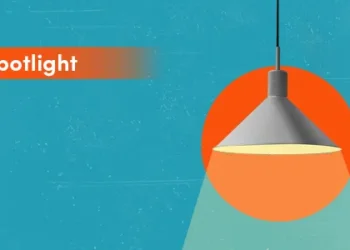The debate over inheritance tax (IHT) on pension death benefits has been simmering for some time. Now, with draft legislation published on 23 July, the Government has taken a decisive step towards introducing the charge from April 2027.
For financial advisers, the implications are clear: clients need to understand not only the rules, but also the practicalities of how these changes will play out.
While some of the initial concerns over complexity have been addressed, the new framework still creates fresh responsibilities – and opportunities – for advisers to guide their clients.
Shifting the responsibility
One of the main criticisms of the original proposal was that it placed the responsibility for reporting and paying IHT on pension death benefits squarely on scheme administrators. Many feared this would slow down estate administration, creating bottlenecks at a time when beneficiaries need clarity.
Under the draft rules, the burden now shifts to the personal representatives (PRs) of the deceased’s estate
HMRC has listened. Under the draft rules, the burden now shifts to the personal representatives (PRs) of the deceased’s estate. This change may help speed up the process, but it also means PRs – and by extension the advisers supporting them – will need to become familiar with a new set of steps and reporting obligations.
Valuation clarity and the end of Business Relief as a workaround
Another significant change is the clarification on how pension benefits will be valued for IHT purposes. The value will be the amount used to provide the death benefit, with no allowance for business relief.
This will disappoint those who speculated that holding business relief-qualifying assets, such as AIM portfolios, inside pensions could mitigate the liability after April 2027. That door is now firmly closed.
How the process will work
The draft rules set out a four-stage process:
1. Pension scheme provides valuation
Scheme administrators will have four weeks from the date of death notification to give PRs a valuation for IHT purposes. Where the scheme has discretion, it must then confirm how much of the benefit is going to a spouse or civil partner (and therefore exempt) and how much to other beneficiaries (potentially taxable).
2. PRs value the estate
The PRs will collate values from all pension schemes and combine them with other estate assets to determine whether an IHT account is needed.
3. PRs submit the IHT account
If tax is due, PRs will calculate the share attributable to each pension, inform beneficiaries and schemes, and submit the IHT account to HMRC.
4. Payment of death benefits
If the benefits are exempt – either because they go to a spouse/civil partner or the total estate is under the nil-rate band – they can be paid immediately, without probate.
Inherited pensions will be subject to IHT from 2027
For non-exempt beneficiaries, IHT can be settled in one of three ways:
- The scheme pays HMRC directly on the beneficiary’s behalf.
- The beneficiary takes the benefit and pays IHT themselves (with income tax relief where applicable).
- The PRs pay from other estate assets, reclaiming the tax from the pension beneficiary where appropriate.
This framework aims to share the IHT burden fairly between all beneficiaries, ensuring one group is not left disproportionately out of pocket.
Specific exemptions and clarifications
The draft rules also settle several points of uncertainty:
- Death in service benefits, whether from a registered scheme or an excepted group life arrangement, will be IHT-free.
- Joint life annuities will remain outside IHT, with spousal benefits covered by the existing spousal exemption and non-spousal payments treated as separate rights.
- Trivial commutation lump sums of up to £30,000 will generally be included in IHT calculations, except where they arise from a dependant’s scheme pension, which is excluded.
What this means for advisers
For many clients, pensions have been viewed as a highly efficient vehicle for passing on wealth, often outside the IHT net altogether. This shift changes that narrative. The timing of death, the structure of pension benefits and the choice of beneficiaries will all have greater tax consequences.
Advisers may need to:
- Revisit estate plans to account for the new IHT exposure on pensions.
- Consider accessing pensions earlier than originally intended where pension funds are clearly in excess of the clients own income needs in retirement.
- Educate executors and PRs on their upcoming responsibilities.
- Review beneficiary nominations to ensure the desired balance between tax efficiency and fairness.
- Consider liquidity planning, as IHT liabilities on pensions may need to be paid before certain assets can be realised.
The direction of travel is clear: pensions will no longer be an IHT-free inheritance in every case
This is also a moment to engage clients in broader intergenerational planning. With the Government closing down perceived workarounds, advisers have an opportunity to position themselves as trusted guides through an increasingly complex tax environment.
The road ahead
It’s worth stressing that these are draft rules. HMRC may refine the detail and advisers should watch for further guidance, particularly on the mechanisms for schemes to pay IHT directly to HMRC.
However, the direction of travel is clear: pensions will no longer be an IHT-free inheritance in every case. The Government has committed to this reform and alternative tax models have been discounted.
For the advice profession, this change is as much about mindset as mechanics. It’s about helping clients understand that “tax-free” pension inheritances are no longer guaranteed – and ensuring that, when April 2027 arrives, there are no unwelcome surprises for those left behind.
Andy Zanelli is head of technical engagement at Aberdeen Adviser













